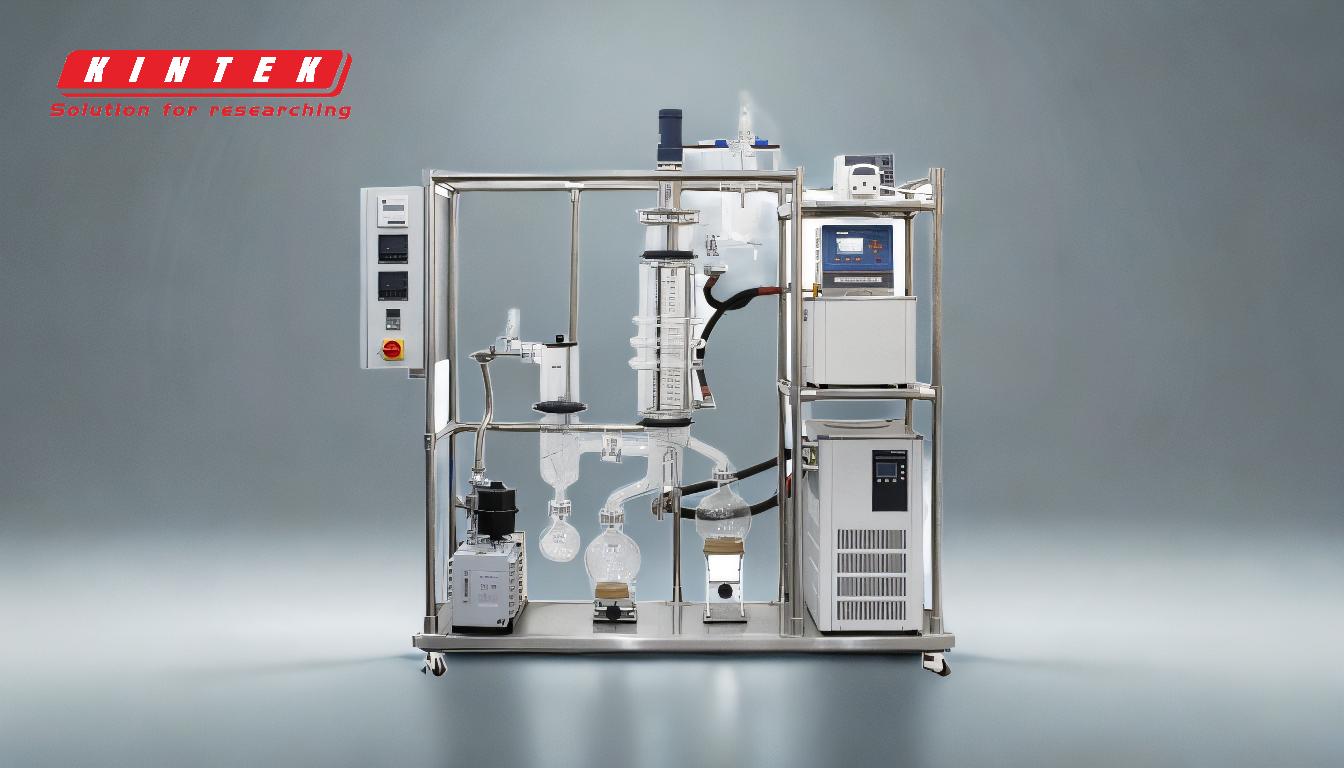Distillation, while a widely used technique in chemistry for separating mixtures based on differences in boiling points, has several notable disadvantages. The primary drawback is the need to apply heat, which can degrade or decompose sensitive compounds, making it unsuitable for delicate substances. Additionally, distillation can be energy-intensive, time-consuming, and inefficient for separating compounds with similar boiling points. It also requires specialized equipment and may not be scalable for large-scale industrial applications. Modifications like vacuum distillation can mitigate some issues, but they introduce additional complexity and cost. Understanding these limitations is crucial for selecting the appropriate separation method for specific chemical processes.
Key Points Explained:

-
Heat Sensitivity of Compounds:
- Distillation requires heating the mixture to its boiling point, which can degrade or decompose heat-sensitive compounds.
- For example, many organic compounds, such as certain pharmaceuticals or natural products, are prone to thermal degradation, rendering them unusable or altering their properties.
- This limitation makes distillation unsuitable for applications involving delicate or thermally unstable substances.
-
Energy Intensity:
- Distillation is an energy-intensive process, particularly for mixtures with high boiling points or large volumes.
- The need for continuous heating and cooling (in the condenser) increases operational costs and environmental impact.
- This inefficiency can be a significant drawback in industrial settings where energy consumption is a critical factor.
-
Inefficiency for Similar Boiling Points:
- Distillation relies on differences in boiling points to separate components. When compounds have similar boiling points, the separation becomes challenging and often requires multiple distillation steps.
- This inefficiency can lead to incomplete separation, reduced product purity, and increased time and resource expenditure.
-
Equipment and Complexity:
- Distillation requires specialized equipment, such as distillation columns, condensers, and vacuum systems, which can be expensive to purchase and maintain.
- The process also demands precise control of temperature and pressure, adding to the complexity and skill required for operation.
-
Scalability Issues:
- While distillation is effective on a laboratory scale, scaling it up for industrial applications can be problematic.
- Large-scale distillation systems often face challenges related to heat transfer, fluid dynamics, and energy efficiency, making them less practical for certain industrial processes.
-
Need for Modifications:
- To address some of these disadvantages, modifications like vacuum distillation or fractional distillation are employed.
- However, these modifications introduce additional costs, complexity, and operational challenges, which may not always be justified by the benefits.
-
Environmental and Safety Concerns:
- The use of high temperatures and potentially hazardous chemicals in distillation poses safety risks, including the potential for fires or explosions.
- Additionally, the energy consumption and waste generated during distillation contribute to environmental concerns, particularly in industries aiming for sustainable practices.
By understanding these disadvantages, chemists and engineers can make informed decisions about when to use distillation and when to explore alternative separation techniques, such as chromatography, crystallization, or membrane filtration, depending on the specific requirements of their processes.
Summary Table:
| Disadvantage | Key Details |
|---|---|
| Heat Sensitivity | Degrades heat-sensitive compounds, unsuitable for delicate substances. |
| Energy Intensity | High energy consumption increases costs and environmental impact. |
| Inefficiency for Similar BP | Challenging separation for compounds with similar boiling points. |
| Equipment Complexity | Requires specialized, expensive equipment and skilled operation. |
| Scalability Issues | Difficult to scale up for industrial applications. |
| Need for Modifications | Vacuum or fractional distillation adds cost and complexity. |
| Environmental & Safety Risks | High temperatures and hazardous chemicals pose safety and environmental risks. |
Need help choosing the right separation method for your process? Contact our experts today for tailored solutions!










